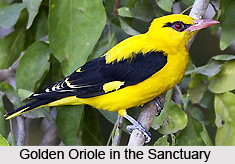 Raksham Chitkul Wildlife Sanctuary, Uttarakhand is situated in the uppermost mountains of Himalayan Mountain Ranges and the peak of Kinner-Kailash is existent in the locality of this wildlife sanctuary. The sanctuary is also referred to as `Sangla Wildlife Sanctuary`. The total area covered by this wildlife reserve measures nearly 34 square kilometres and the Tibetan Plateau is located on the eastern side of this sanctuary. It was erected in the year 1962. Its location has enriched the sanctuary with some rare and mesmerizing species of flora and fauna. Towards its southern side is present Govind Wildlife Sanctuary which belongs to the state of Uttarakhand. Visitors are unable to access the higher altitudes of Raksham Chitpul Wildlife Sanctuary, particularly the regions based above a height of 2, 000 metres above sea level.
Raksham Chitkul Wildlife Sanctuary, Uttarakhand is situated in the uppermost mountains of Himalayan Mountain Ranges and the peak of Kinner-Kailash is existent in the locality of this wildlife sanctuary. The sanctuary is also referred to as `Sangla Wildlife Sanctuary`. The total area covered by this wildlife reserve measures nearly 34 square kilometres and the Tibetan Plateau is located on the eastern side of this sanctuary. It was erected in the year 1962. Its location has enriched the sanctuary with some rare and mesmerizing species of flora and fauna. Towards its southern side is present Govind Wildlife Sanctuary which belongs to the state of Uttarakhand. Visitors are unable to access the higher altitudes of Raksham Chitpul Wildlife Sanctuary, particularly the regions based above a height of 2, 000 metres above sea level.
Flora of Raksham Chitkul Wildlife Sanctuary
Raksham Chitpul Wildlife Sanctuary is filled with intense greenery and vegetation which involves Sub-Alpine Forests, Dry Broadleaf and Coniferous Forests, Dry Temperate Forests and Dry Alpine Scrubs and Pastures. Fir and Birch trees thrive in Sub-Alpine Forests while Dry Deodar Forests and Chilgoza Pine Forests are observed in the Dry Temperate Forests. Deodar and Chilgoza Forests are found above 2, 000 metres and Bamboo grows on a large scale from a height of above 2, 800 metres. The Alpine forest belt of this sanctuary contains a large quantity of herbs like Dhup, Karu, Kuth, Patish and others which serve as efficient Ayurvedic antidotes. These local herbs are collected and sold by the regional villagers, as a means of their daily livelihood.
Fauna of Raksham Chitkul Wildlife Sanctuary
A majority of Himalayan fauna have been noticed inside Raksham Chitpil Wildlife Sanctuary which consist of Musk Deer, Wild Goat, Leopard, Brown Bear, Wild Sheep, Himalayan Black Bear, Goral and much more. Some of the numerable birds which survive in this wildlife reserve include Golden Oriole, Mountain Thrush, Chukor, Steppe Eagle, Monal Pheasant, Gold Crest, Long-Legged Buzzard and others.
One can reach this sanctuary throughout the entire year as this region is ignored by the monsoons. The perfect time to approach this place is between the months of May and November.



















